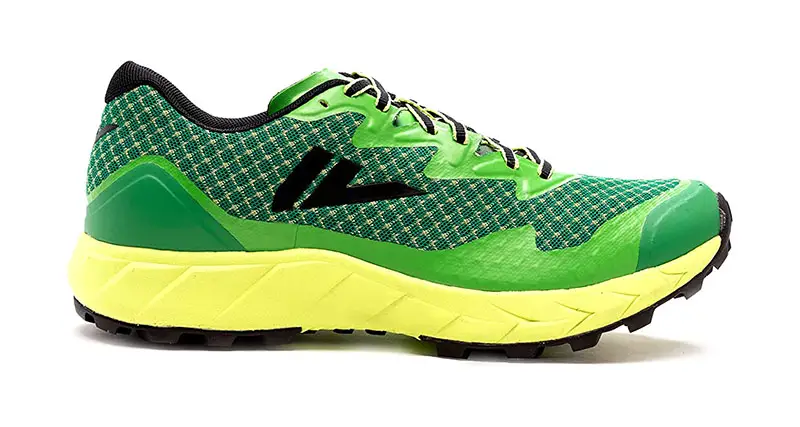You could feel overrun by the selection of running shoe options when you visit a store that offers sports shoes. If you don’t know which one is best for you and purchase one, there’s a good chance you’ll choose a shoe that doesn’t suit your running style.
Those elaborate and eye-catching patterns may draw you in, and the advice claims that they will significantly improve your running efficiency. I would attempt to explain “how to pick a running shoe” after trying out many pairs and learning more about the structure of the human body. I would first assume the following when choosing a pair of running shoes:
“Find a pair of running shoes that will allow you to run efficiently and naturally.”
High Efficiency means that when you wear a specific shoe, a significant portion of the force you provide to the ground when running is converted into ground force that propels you ahead.
How To Find The Right Jogging Shoes
Because wearing the right pair of shoes means that you’re going to have a pleasurable jogging experience while preventing potential injury at the same time.
So if you think that getting the right shoes is going to be difficult – Then think again. We will show you how easy it is to find “That” right shoes…
These are what you need to know to find “That” right shoes: –
Identify your foot’s Arches – Is it flat, normal, or high arch?
And with that, let’s begin!
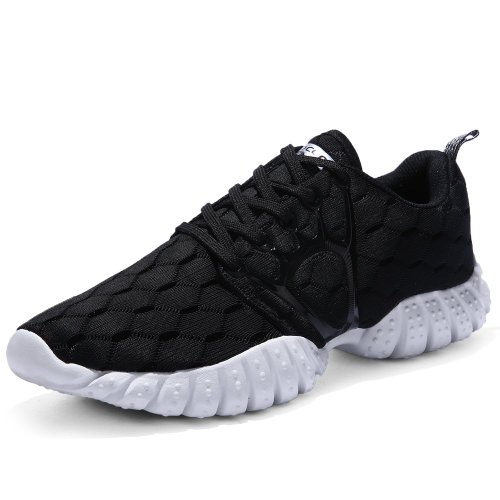
1. Determine your foot types
There are many types of jogging/running shoes, such as minimalist, performance, lightweight shoes, and many others.
But mainly there are only 3 types of shoes that you should know. Those 3 types of shoes are Low Arch Feet(Flat Foot), Normal(Medium) Arch Feet, and High Arch Feet.
Therefore, the first step in choosing a running shoe is figuring out your foot type. Do you have flat feet or high arches? Are your feet narrow or wide? Answering these questions will help you find a shoe that provides the right amount of support and stability. You can visit a specialty running store to have your feet professionally evaluated, or you can try the “wet test” at home.
To do the wet test, wet your feet and step on a piece of paper. If you have a normal arch, the wet part of your foot will make a print that’s about half the size of your foot. If you have a low arch, the print will be wider and more circular. If you have a high arch, the print will be narrow and elongated.
Once you know your foot types, you can start picking your shoes. There are different types of shoes that cater for different types of feet.
Stability Shoes
It is ideal for most runners or anyone with Normal Arch Feet and comes in all sizes. The intended use is “Normal Pronation.”
As the name implies, it’s made to support and stabilize your running action and provide a stable ground for your best jogging or running performance.
Motion Control Shoes
These were created specifically for joggers who have flat feet or low arches. You tend to “overpronate” your feet when jogging if you have flat feet. For beginners, this is especially true. You are more likely to suffer injuries as a result.
Fortunately, motion-control shoes are made to minimize overpronating by controlling the back foot action. This makes running enjoyable while reducing the likelihood of most injuries.
Cushioned Shoes
This is the lightest shoe among the three of them. It is made to offer the most cushioning possible for joggers who have high arches and tend to “underpronate.”
You require a lot of cushioning to absorb the majority of the shock when running because of your “high arches.”
While safety should be your top priority when choosing other types of footwear that aren’t worn for athletic purposes. The best safety shoes are those that aren’t too heavy so that your feet don’t have to work too much while still offering excellent protection.
2. Good Traction
It means that the grip force of the shoe’s outsole is sufficient for you to grab the ground with your landing foot. As a result, your feet would be stabilized and would generate stronger reaction force during the push-off phase of running.
Typically, manufacturers place a graphite-based outsole, primarily on the upper portion of running shoes, on their products. Better traction would result from this substance.
Typical model: VJ Ultra Long-Range Running Shoes
3. Low heel-to-toe drop
The drop is defined as the difference in height between the heel and toe, or the drop = heel height – toe height. It should fall between 0 and 6 mm. Why is a small heel-to-toe drop preferable? Since you are having both of your feet land on the ground simultaneously when you wear running shoes with low droplets, it will assist you to run with a midfoot landing.
Training your Achilles tendinitis would also be beneficial. As a result, it enhances the use of your muscles when you’re running and supports normal gait patterns.
Typical model: Vibram five finger shoes and New Balance minimus series
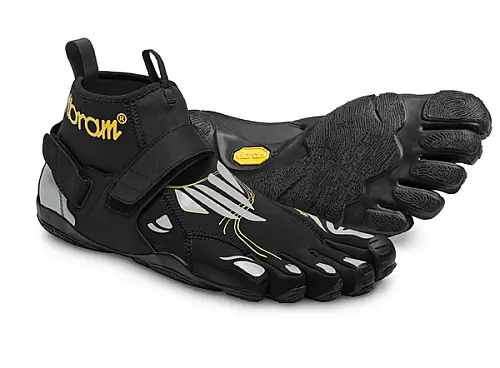
4. Wide enough running shoes and toebox
The shoes ought to be roomy enough for your feet to splash as you land. It would make you more stable and push the ground. If you are unsure if the shoe is wide enough for your feet or not, take out the insole and check to see if it completely covers the width of your feet when you are standing.
5. No or minimum arch support
Joints, muscles, tendons, and ligaments make up our feet. They are built with shock-absorbing systems in mind. Your arch will descend as you land in order to cushion the natural shock to your feet.
Running shoes that provide artificial arch support causes the body’s structures to become weaker, stiffer, and less flexible. Get rid of the arch supports and let your feet strengthen instead. You can start out needing a transition shoe with a moderate arch before switching to one without arch support.
6. Flexible from toe to heel and easy to twist from side to side
Running shoes that allow your feet to move freely and effortlessly during the gait cycle are necessary since your foot moves in three dimensions while you’re running. For simple bending and twisting, the running shoes must feature a flexible midsole and a soft top.
Typical model: Nike Free series
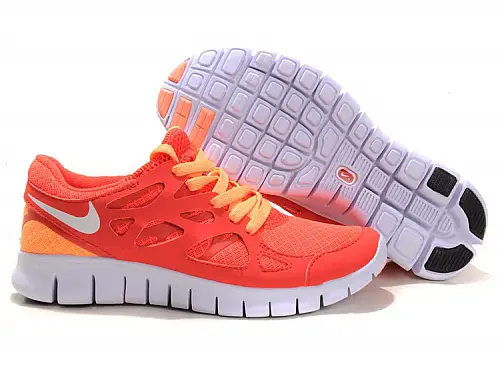
7. Lightweight
It typically implies less than 9 oz. for men’s size 9 running shoes and 8 oz. for women’s size 8 running shoes. You might run more quickly, experience less burdens, and experience less weariness thanks to the lightweight material.
Typical model: Decathlon Kalenji Men Lightweight Running Shoes
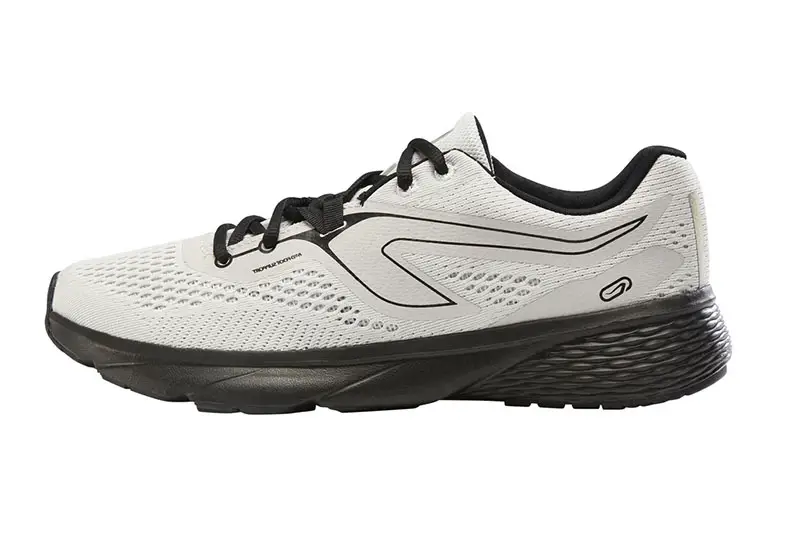
8. Optimum sole thickness and stiffness
Finding running shoes with the right thickness can boost stability when you’re running and will help you feel the ground more easily. Typically, runners want thick soles for more cushioning; this is especially true for heavier runners who weigh more than 180 pounds.
On the other hand, you ought to keep the sole height of your running shoes under 30 mm. In other words, if the sole is excessively soft, it is helpful for cushioning but will also absorb the push-off energy. They should optimize the sole stiffness. Additionally, with better ground sensation, you can train and enhance your running technique to run effortlessly and effectively.
Our feet are designed and filled with nerves that sense pressure and movement. This allows your brain to make quick responses to correct slipping on ice, balance, and stepping on obstacles such as rocks.
Typical model: Nike ZoomX Invincible Run Flyknit V2
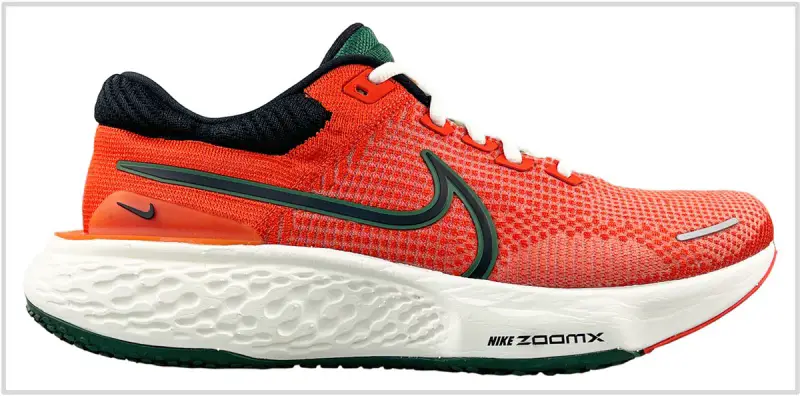
9. Consider your running style
Are you a heel striker or a forefoot runner? Heel strikers tend to land on the back of their foot, while forefoot runners land on their toes. Different shoes are designed for different running styles, so it’s important to find a shoe that caters to your individual needs.
10. Think about the surface you’ll be running on
If you’re planning on running mostly on paved roads, you’ll want a shoe with good cushioning to absorb the impact of each step. On the other hand, if you’ll be running on trails or rough terrain, you’ll want a shoe with more stability and traction.
11. Don’t forget about fit
It’s important to find a shoe that fits well and feels comfortable. Don’t just rely on the size listed on the box – different brands and models can fit differently. It’s best to try on a few different sizes and styles to find the one that fits you best.
12. Consider your budget
Running shoes can range in price from under $100 to over $200. While it’s true that you get what you pay for, it’s not always necessary to spend top dollar on a shoe. Just be sure to choose a shoe that fits your needs and budget.
On the other hand, when wearing a running shoe, please remember to tie up your lace to lock your heel completely to avoid the shoe moving around your feet during the gait cycle. In addition, you would consider lifting your heel with only toes hitting the ground and make sure without any pain on top of the foot as well.
Summary
Other than focusing on those new materials and technology presented by different top brands to enrich your running experience, the above considerations offer some ideas on choosing running shoes to run naturally, avoid injury, and respond fast during running.

